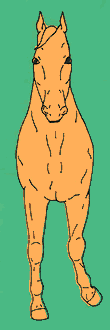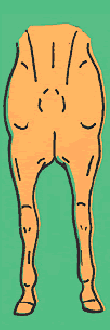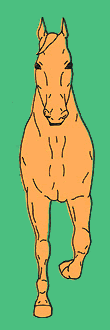Ashley Griffin, University of Kentucky
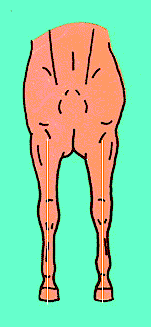
The horse’s forelimb bears 65 percent of its body weight. Therefore, it is extremely important for a horse to have straight, structurally correct front legs. Due to the amount of weight on the forelimbs, horses suffer from more front leg injuries due to trauma and concussion than any other type of leg injuries.
Ideally, when viewing the forelegs from the front, a straight line from the point of the shoulder should bisect the entire column of bone all the way to the toe, with equal portions of the bone on either side of the bisecting line.
The toes and knees should point straight forward, although this rarely occurs The width of the toes on the ground should be the same width as the legs as they originate from the chest. The cannon bone should be centered on the knee and fetlock.
There are several possible deviations from the ideal front column of bone as viewed from the front. These deviations can affect movement and performance. Horses whose toes point inward (toed-in) are referred to as pigeon-toed. Horses with toed-in conformation travel with an outward hoof flight path referred to as paddling out. Horses that have toes that point outward (toed-out) are called splay-footed. These splay-footed horses travel with an inward hoof flight path referred to as winging or dishing in.
Another structural deviation in the front legs is that in a horse that is base-narrow. This stance is indicative of a horse that stands closer at the hooves or ground than at the origin of the legs at the chest. This is typical of heavy-muscled horses. The base-narrow horse will travel with its hooves close in front and will land on the outside (lateral side) of the hoof wall. Due to extra weight placed on the outside of the hoof, horses develop conditions such as ringbone, sidebone, and heel bruising. Horses with this conformational fault can be toed-in or toed-out.
 |
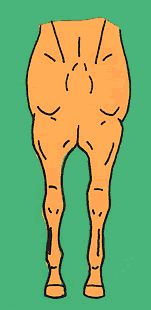 |
| Base Wide | Base narrow |
Base-wide conformation positions the horse’s hooves wider at the ground than the origin of its legs at the chest. This condition is seen in many narrow-chested horses and is usually accompanied by hooves that toe-out. This condition causes more weight to be distributed on the inside of the horse’s hoof, predisposing the horse to ringbone and sidebone. Horses that are base-wide travel wide simply because their conformation forces them to do so.
Bowlegged horses have the entire knee in an outward deviation as viewed from the front. This condition causes increased tension on the outside of the leg due to the unequal distribution of concussion and force when the hoof strikes the ground.
Knock-kneed, or close-kneed, horses have the entire knee set to the inside of the straight line from the chest to the toe. This condition is usually accompanied by toed-out feet and some degree of outward rotation of the cannon bone. As the horse moves and its legs strike the ground, there is unequal distribution of concussion on the column of bone, predisposing the horse to unsoundness.
Bench knee is another structural fault of the horse’s front legs. Bench, or offset, knees are characteristics of a horse with cannon bones set too far to the outside of the knee. This conformational fault increases the possibility for horses to develop splints.
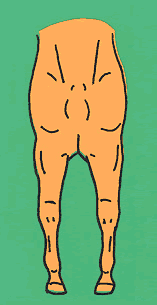 |
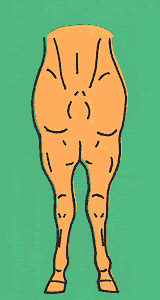 |
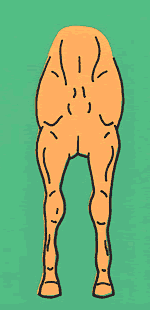 |
| Bowlegged | Knock Knee | Bench Knee |
Mouse over the images below to see the conformational fault and the resulting travel related deviation.
Conformation leading to deviations in movement

